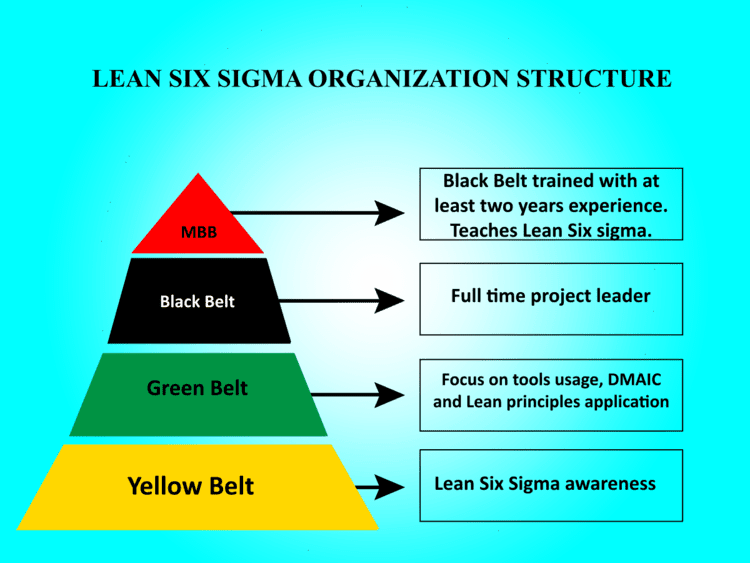 | ||
Lean Six Sigma is a methodology that relies on a collaborative team effort to improve performance by systematically removing waste, combining lean manufacturing/lean enterprise and Six Sigma to eliminate the eight kinds of waste (muda): Transportation, Inventory, Motion, Waiting, Over production, Over processing, Defects, and Skills (abbreviated as 'TIMWOODS').
Contents
1980s
What was today to become Lean Six Sigma can be traced to Motorola in the United States in 1986 to compete with the Kaizen business model in Japan. Ever since World War 2 Japan was experiencing an economic boom and Japanese products at the time had a higher quality than American ones. In the 1990s General Electric and Allied Signal switched over to Lean Six Sigma.
During the 2000s Lean Six Sigma broke off of Six Sigma.
The first concept of Lean Six Sigma was created in 2001 by a book titled Leaning into Six Sigma: The Path to integration of Lean Enterprise and Six Sigma by Barbara Wheat, Chuck Mills, Mike Carnell.
Throughout the early 2000s and mid 2000s Lean Six Sigma was not a popular practice among businesses. In the late 2000s with the Great Recession, this prompted many businesses away from the Six Sigma concept and more towards a Lean Six Sigma concept.
Description
Lean Six Sigma utilizes the DMAIC phases similar to that of Six Sigma. Lean Six Sigma projects comprise aspects of Lean's waste elimination and the Six Sigma focus on reducing defects, based on critical to quality (CTQ) characteristics. The DMAIC toolkit of Lean Six Sigma comprises all the Lean and Six Sigma tools. The training for Lean Six Sigma is provided through the belt based training system similar to that of Six Sigma. The belt personnel are designated as white belts, yellow belts, green belts, black belts and master black belts, similar to judo.
For each of these belt levels skill sets are available that describe which of the overall Lean Six Sigma tools are expected to be part at a certain Belt level. These skill sets provide a detailed description of the learning elements that a participant will have acquired after completing a training program. The level upon which these learning elements may be applied is also described. The skill sets reflects elements from Six Sigma, Lean and other process improvement methods like the theory of constraints (TOC) total productive maintenance (TPM).
